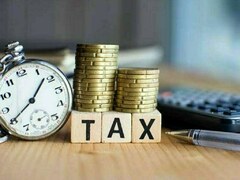EDITORIAL: Pakistan’s energy imports - petroleum, LNG, LPG, and coal-stood at $25 billion in the last fiscal year. Within it, the share of transport is the highest while its efficiency in usage is woefully low. This is not sustainable and has to change. In the medium to long term, the focus has to shift on indigenous energy resources, including renewables, to produce electricity, and by using primary energy sources efficiently. Transportation, especially public and logistic transport, must slowly move towards electric.
The good news is that upcoming projects in the IGCEP (Indicative Generation Capacity Expansion Plan) have focused on indigenous thermal sources, mainly the Thar coal, and renewables, including hydel. With inclusion of these, the component of imported fuels will decline in proportion, reducing generation cost. However, there are issues in hydel projects where the initial cost of tariff is higher as the charge of the debt is higher in the first ten years of long-term projects and is dominated by imported component of payment. Similar is the case of nuclear. Then the evacuation of power from Thar coal is not matching the speed of generation. The production capacity has surpassed the pace of evacuation. The investment needs in transmission system cannot be overemphasized. Wind corridors where the power generation cannot take place as the evacuation capacity of the power is a thorny issue face identical issues.
There can be losses and additional wheeling costs for taking the power to the load centers. Another way to operate is to bring the supply close to the generation. Industry can come close to these generation sites. And in the case of the Thar coal, there are talks to bring non-power sector for its usage as cement industry has shifted to coal for production and is currently relying on imported coal.
All these factors have to be combined and synchronized to bring in efficiency. The utmost need is to have investment in the transmission and deregulation and privatization of the distribution system. Then the shift of industrial consumers to bulk buying is the need of the hour as industry simply cannot take further burden of non-recoveries and cross-subsidies.
Competitive energy model has to kick in to initiate to dismantle the take-and-pay structure. The problem is that upcoming numerous hydel and other renewable projects are on take-and-pay basis indexed to USD having an imported debt component, which dilutes the benefit of shift from imported fuel. The concept of micro grid is likely to strengthen as solar installation on the roof top is only going to increase. Technological breakthroughs could usher in revolution in the energy distribution system as happened in the telecommunication sector in early 2000s. It’s a long haul. And there are so many slips between the cup and the lip. Now the growing power tariffs are making industrial production uncompetitive and unaffordable for households and commercial segments alike. Not only will, therefore, consumption decline, recovery will also be lower. That is why investment and deregulation in the transmission and distribution system is an essential condition for sustainability of the power sector.
Copyright Business Recorder, 2023
























Comments
Comments are closed.